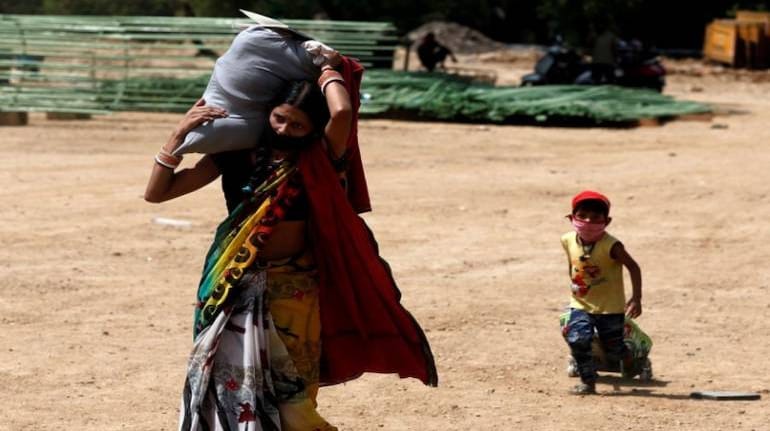Manoranjan Mohanty
The root of the migrant labour crisis lay in the lack of employment opportunities in rural India, which must be restructured with vastly diversified productive activities to absorb local labour

Migrant worker stories have almost disappeared from the newspapers. Governments are preoccupied with either containing the spread of COVID-19 or re-opening the economy. Sadly, the millions of migrant labourers who were forced to head towards their homes since March 24 are still looking for support.
Some got MGNREGS jobs in their villages, but most of them are unemployed after spending time in quarantine centres. They live on paltry ration in unhygienic conditions. The fact that containing the virus and resuming production are both connected with the migrants is not sufficiently understood. Their poor living conditions and unsafe transportation made them victims of COVID-19 and its carriers, further spreading it to towns and villages which are now seeing a surge in cases.
Let us remember that migrant workers are the key element in the construction sector and industries, especially the small and medium industries. Hence, the need to appreciate a few facts and design a policy that goes beyond giving relief for a few months as charity. Migrant workers have rights as citizens, and are major drivers of the economy.
First, during the lockdown, the health emergency was as challenging as the labour faced an existential crisis due to closure of factories. This was evident in the big cities where labour from the underdeveloped states such as Odisha, Jharkhand, Chhattisgarh, Madhya Pradesh, Bihar and Uttar Pradesh were forced out of their premises.
Estimates on migrant labour vary, but most analysts put the figure at about 150 million, of whom about two-thirds were single migrants. If each one has about four members back at home, then the total affected would amount to another 400 million. This vast mass of humanity faced livelihood, displacement and health crisis, which is as serious as the outbreak.
Second, every agricultural labour, marginal and small farmer, small artisan, worker in a small enterprise, is a potential migrant labourer when rural economy is unable to provide a source of livelihood. The COVID-19 period brought out this phenomenon sharply. The vast majority of them were distress migrants. When many of them returned to their villages and after the quarantine period they had only MGNREGS as an employment option. Even though the government enhanced the allocation for the scheme by some Rs 40,000 crore that is not enough.
Many skilled labourers and youth declined to join that work.
The rural economy was not designed to absorb local labour. Therefore, the root of the migrant labour crisis lay in the lack of employment opportunities in rural India, which must be restructured with vastly diversified productive activities to absorb local labour. Thereafter, when they migrate it would not be out of distress, but bargaining for better prospects.
Third, it is not appreciated that the migrant labour was the main contributor to the building of urban India. The employers use them and send them off after a project is over. The few welfare measures achieved in the recent decades after long struggles do not meet their legitimate long-term needs. The charity approach was evident when three months after the lockdown, the Prime Minister announced a ‘Garib Kalyan Rozgar Yojana’ giving 125 days’ work till November.
In this situation, at least two measures are urgently required. One is to implement the existing law in letter and spirit, and ensuring this by setting up a statutory National Commission on Migrant Labour to protect the rights of migrant workers. Two, is to restructure the rural economy enabling the panchayats to plan a full-employment development programme.
Under the 1979 Act and its 2011 rules, the migrant workers are entitled to minimum wage, displacement allowance, home journey allowance, suitable accommodation facilities and medical facilities among other things. The Act warrants registration of labour contractors, employers and the enterprises where they are engaged. The state governments are obliged to conduct an audit of each establishment to ensure that the law was implemented.
The COVID-19 experience exposed how this law was only on paper and how disinterested were the labour officials to enforce it. Absence of strong migrant workers organisations made it worse. There are also neoliberal labour reforms going on restricting workers’ rights reducing all labour laws into four codes on wages, social security and welfare, industrial relations and occupational safety, health and working conditions.
On the question of making rural India an attractive, full-employment sector, one needs a change of outlook. Even China has failed in this and is facing a rural crisis. Rather than making panchayats a channel of delivery of central schemes, if they can have the power to plan for comprehensive development giving land and forest rights to the people, then distress migration will be a thing of the past.
